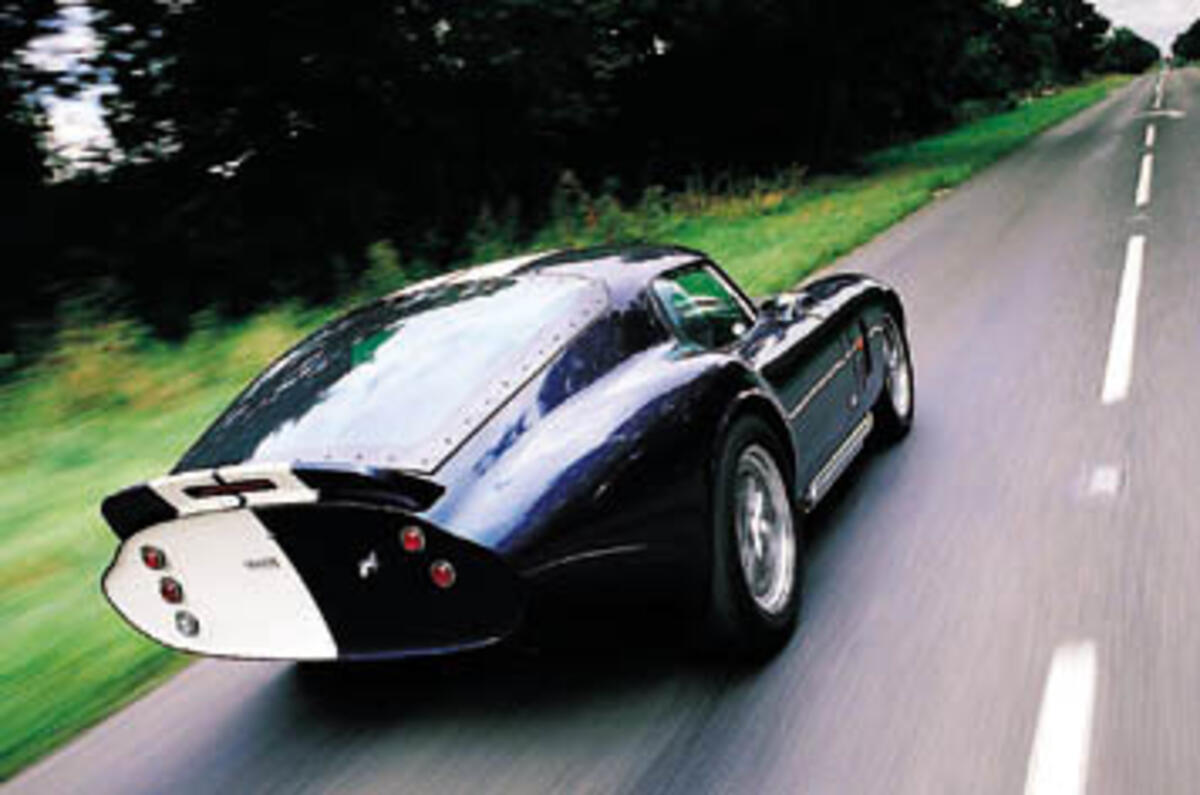My only problem with heaven is I can’t see how just one place can be heavenly to all who earn the right to go there. My mother-in-law’s heaven would be a vegetable patch the size of Saturn, my daughters’ some ghastly pink paradise full of magic castles, fairies and princesses.
My particular heaven would be the Nürburgring’s northern loop, but that still leaves the vexed question of what I’m going to drive when I get there. Staying within the realms of road cars – we’ll run out of magazine if I start debating the relative merits of a Lola T70 Mk3B and a short-tail, 5.0-litre Porsche 917K – I always imagined it would be a Ferrari F40. I’ve driven more than 1000 cars since I first pedalled Ferrari’s greatest road car and still it stands proud of them all. But then I drove a plastic-bodied, pushrod-powered, South African-built replica of a slightly obscure mid-’60s American race car. And now I’m not so sure.
The Superformance Le Mans Coupé, a recreation of the 1964 Cobra Daytona Coupé, is one of the most thrilling things I have ever had the pleasure to drive, and not just because it is astonishingly, absurdly fast. Truth is, it connected with me to a depth I didn’t think modern road cars could reach any more. There are two reasons and the first is my love of ’60s automotive Americana. Muscle cars are a breed apart, as distinct as Italian supercars or the Porsche 911, and until you’ve at least blagged a ride in one, your automotive education is incomplete. I’ve raced a Camaro, coveted Corvettes and come within about 10 minutes of flying to California to buy a Charger.
And then there’s that other ‘C’ car, the Cobra. Back in the ’60s, the powerful and light Cobra had no problem dispatching all comers on American short race tracks. But Carroll Shelby, the Cobra’s creator, wanted more: he wanted to beat the best, which meant taking on Ferrari at an international level. The problem was that, at foreign circuits with long straights like Le Mans, you could have strapped a Redstone rocket to the back of Cobra and the much less powerful Ferrari 250 GTOs would still have come past on the straight. Putting it mildly, aerodynamics were not a Cobra strong point.
Which is why a young designer called Peter Brock was brought in to develop a new body for the Cobra and the Daytona coupé was born. Without using a single extra horsepower, the Daytona raised the Cobra’s top speed by over 30mph. They only failed to win the 1964 GT championship because the last round was at Monza, Italy so Enzo Ferrari had it cancelled. The next year Ferrari withdrew and the Daytonas won all bar two races.
The second reason this recreation of that car crept so far under my skin is that the same team who did the original was reunited to do this one. Peter Brock designed it, Bob Negstad – who’d done the chassis for the 427 Cobra – looked after the suspension and Bob D C Olthoff, nearly 40 years on, was its development driver. The only missing man is Shelby himself, whose sole involvement in the project to date was to impound the first one imported into the US. But, dislike the car as he does, he has not been able to stop it.It’s built by Superformance in Port Elizabeth. The body, made of an advanced glass-reinforced plastic called Vinylester, is slightly bigger than, and has no panels in common with, the original it so closely resembles. It has a spaceframe chassis, and where the Cobra used a leaf spring suspension design that was archaic 40 years ago, the recreation deploys rose-jointed double wishbones at each corner.

























Add your comment